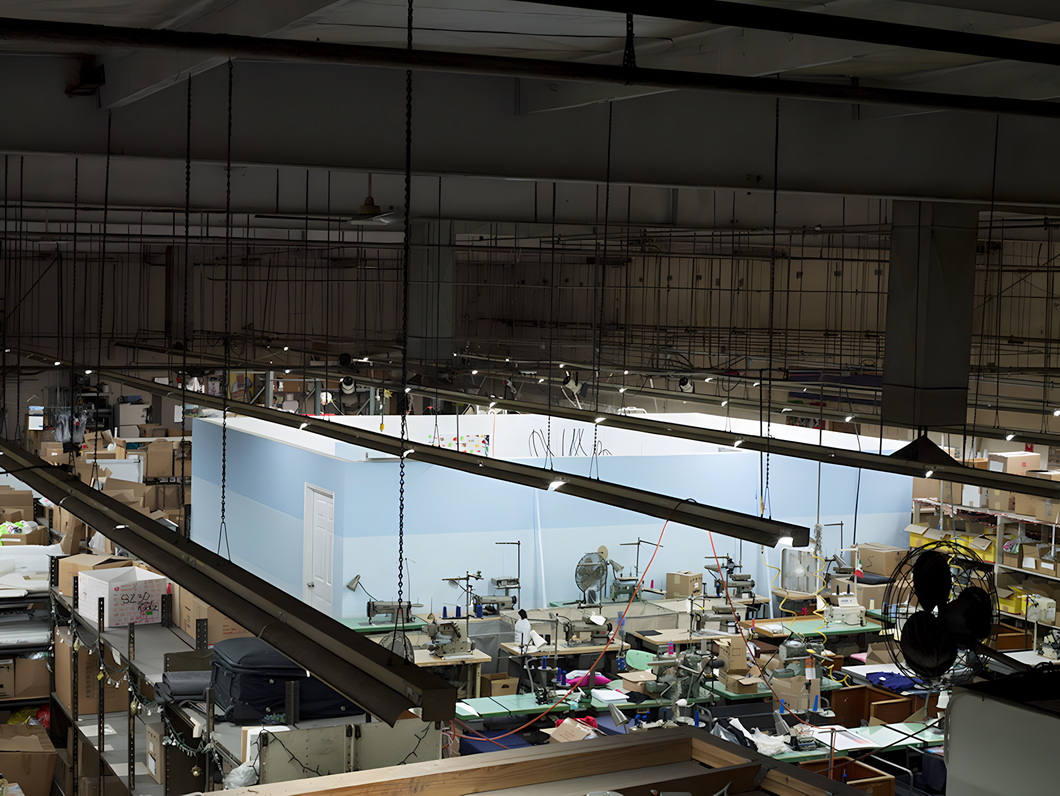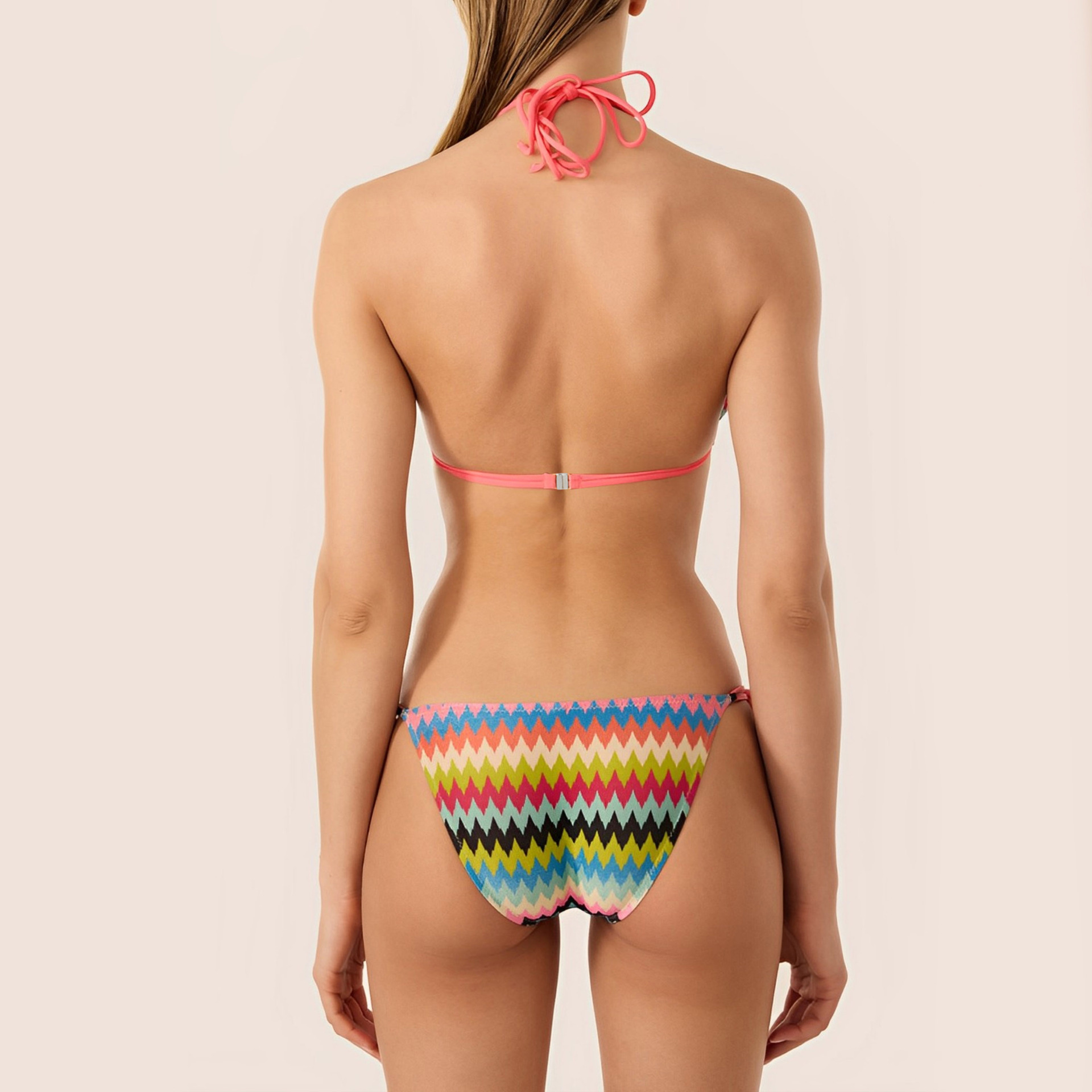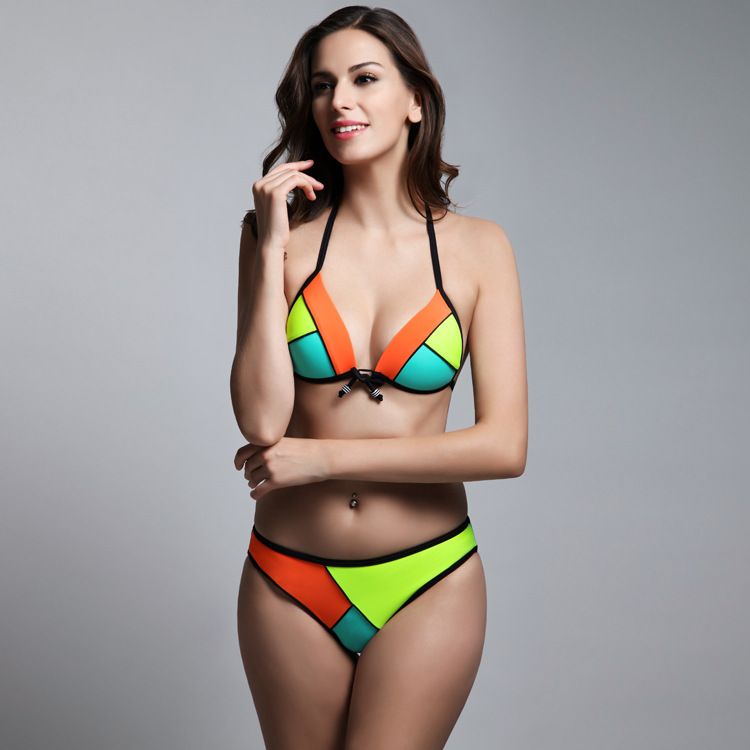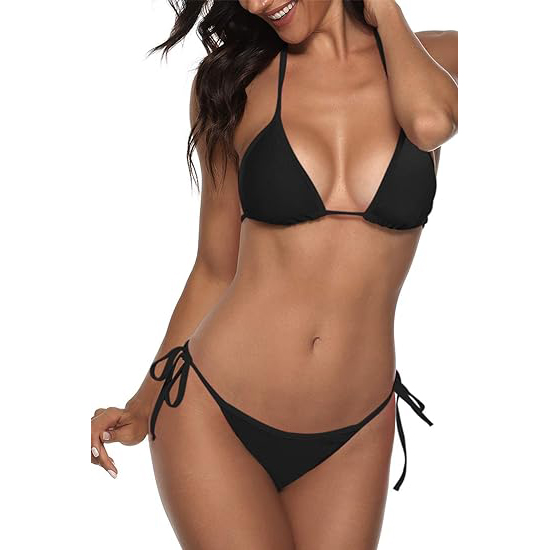Content Menu
● The Evolution of the Bikini Factory
● The Bikini Factory Production Process
● Innovations in the Modern Bikini Factory
● The Global Reach of Bikini Factories
● Ethical Considerations in Bikini Manufacturing
● Top 10 Bikini Factories
● The Future of the Bikini Factory
● Choosing the Right Bikini for You
>> How to Find the Perfect Fit
>> Picking Colors and Patterns
● Caring for Your Bikini
>> Storage Ideas
● Conclusion
In the heart of the fashion industry lies a fascinating realm often overlooked by the average beachgoer – the bikini factory. These bustling hubs of creativity and production play a crucial role in shaping the swimwear trends that grace beaches and poolsides around the world. From the initial design concept to the final product, the journey of a bikini through a bikini factory is a testament to the intricate blend of artistry, technology, and craftsmanship.

The Evolution of the Bikini Factory
The concept of the bikini factory has evolved significantly since the introduction of the modern bikini in 1946. In the early days, bikini production was often a small-scale operation, with local seamstresses and tailors crafting these daring new garments. However, as the popularity of the bikini soared, so did the demand for mass production.
By the 1960s and 1970s, dedicated bikini factories began to emerge, capitalizing on the growing market for swimwear. These early bikini factories were characterized by rows of sewing machines, large cutting tables, and skilled workers meticulously crafting each piece. The focus was primarily on producing large quantities of standardized designs to meet the burgeoning demand.
As we entered the 21st century, the bikini factory landscape underwent another transformation. With the rise of fast fashion and globalization, many bikini factories shifted their operations to countries with lower production costs. This shift allowed for even greater scale and efficiency in bikini manufacturing, but it also raised concerns about working conditions and environmental impact.
Today, the modern bikini factory is a far cry from its humble beginnings. State-of-the-art technology, sustainable practices, and a focus on customization have revolutionized the way bikinis are produced. Let's take a closer look at the inner workings of a contemporary bikini factory.
The Bikini Factory Production Process
Step 1: Design and Conceptualization: The journey of a bikini begins long before it reaches the factory floor. In the design studios of swimwear brands, creative teams pour over trend forecasts, color palettes, and innovative fabric technologies. They sketch designs, create digital renderings, and develop prototypes. Once a design is finalized, it's sent to the bikini factory for production.
Step 2: Pattern Making: At the bikini factory, skilled pattern makers translate the designer's vision into precise patterns. These patterns serve as the blueprint for cutting the fabric. In modern bikini factories, computer-aided design (CAD) software is often used to create and adjust patterns with pinpoint accuracy.
Step 3: Fabric Selection and Cutting: The choice of fabric is crucial in bikini manufacturing. Modern bikini factories work with a wide range of materials, from traditional nylon and spandex blends to innovative, eco-friendly options like recycled polyester. Once the fabric is selected, it's laid out on large cutting tables. In high-tech bikini factories, computer-controlled cutting machines ensure precise and efficient fabric cutting, minimizing waste.

Step 4: Sewing and Assembly: This is where the bikini truly begins to take shape. Skilled seamstresses in the bikini factory use specialized sewing machines to join the cut pieces together. The type of stitching used is crucial – flatlock and zigzag stitches are common in bikini production as they provide both strength and flexibility. In some high-end bikini factories, certain delicate or intricate parts may still be sewn by hand.
Step 5: Adding Details and Embellishments: Many bikinis feature additional elements like padding, underwire, clasps, and decorative embellishments. This stage of production in the bikini factory requires careful attention to detail. Workers meticulously attach these elements, ensuring they are secure and properly positioned.
Step 6: Quality Control: Quality assurance is a critical step in any bikini factory. Each piece is carefully inspected for any defects in stitching, fit, or overall appearance. Many bikini factories employ stringent quality control measures, including multiple inspection points throughout the production process.
Step 7: Finishing and Packaging: Once a bikini passes quality control, it moves to the finishing department of the bikini factory. Here, any loose threads are trimmed, and the garment is pressed or steamed to achieve a polished look. Finally, the bikinis are tagged, folded, and packaged, ready to be shipped from the bikini factory to retailers or directly to customers.
Innovations in the Modern Bikini Factory
Today's bikini factories are at the forefront of innovation in the fashion industry. Here are some key areas where bikini manufacturing is pushing boundaries:
Sustainable Materials Many bikini factories are now focusing on eco-friendly production. This includes using recycled materials, such as Econyl (regenerated nylon made from ocean waste) and recycled polyester. Some bikini factories are even experimenting with biodegradable fabrics, aiming to reduce the environmental impact of swimwear.
3D Printing Technology While still in its early stages, some innovative bikini factories are exploring the use of 3D printing technology. This could revolutionize the production process, allowing for highly customized designs and potentially reducing waste.
Digital Printing Advanced digital printing techniques are being adopted by many bikini factories. This allows for more intricate and vibrant patterns, as well as the ability to produce smaller batches of unique designs more efficiently.
Automation and Robotics While skilled human workers remain essential in bikini production, some factories are incorporating robotics for certain tasks. Automated cutting machines and robotic arms for material handling can increase efficiency and precision in the bikini factory.

The Global Reach of Bikini Factories
The bikini factory industry has a truly global footprint. While many high-end and boutique bikini brands maintain production facilities in countries like Italy, France, and the United States, a significant portion of mass-market bikini production occurs in countries with lower labor costs.
China has long been a major hub for bikini factories, known for its efficient production capabilities and vast supply chains. However, in recent years, countries like Vietnam, Bangladesh, and Indonesia have also become important centers for bikini manufacturing.
This global distribution of bikini factories has both advantages and challenges. On one hand, it allows for cost-effective production, making bikinis more accessible to a wider range of consumers. On the other hand, it raises concerns about working conditions, fair wages, and environmental practices in some bikini factories.
Ethical Considerations in Bikini Manufacturing
As consumers become more conscious of the origins of their clothing, many bikini factories are facing increased scrutiny regarding their ethical practices. This has led to a growing movement towards more transparent and responsible bikini production.
Some bikini factories are now obtaining certifications that verify their commitment to fair labor practices and environmental sustainability. These certifications often involve regular audits of the bikini factory, ensuring compliance with standards for worker safety, fair wages, and environmental management.
Additionally, some swimwear brands are choosing to partner with local, smaller-scale bikini factories. This allows for greater oversight of the production process and often results in higher quality, albeit at a higher cost.
Top 10 Bikini Factories
1. Abely Fashion: As per your request, this is listed first. However, I don't have specific information about this company from the search results.
2. Bali Swim: This is described as the leading manufacturer and accelerator of aspiring swimwear startups worldwide. They operate an eco-conscious and solar-powered factory, utilizing recycled fabrics like Carvico, ECONYL®, and REPREVE®.
3. Thaikila: This is a sustainable swimwear manufacturer that has moved from Paris to Bali, Indonesia.
4. Yogi & Boo: They are known as Bali's duty-free fabric importer for high-quality swimwear manufacturing.
5. Bellakini Swimwear Factory: This factory specializes in high-quality swimwear manufacturing in Bali, Indonesia.
6. AEL Apparel: They are described as a top-rated custom sustainable swimwear manufacturer in China.
7. Hongyu Apparel: This company is known for crafting swimwear with a conscience, focusing on sustainable practices.
8. Arcus Apparel Group: They are noted as the best swimwear manufacturer for small-batch production in the U.S..
9. Appareify: This company is mentioned as the best swimwear manufacturer overall in one of the search results.
10. Bali Summer: This is a swimwear manufacturer in Bali that focuses on ethical and sustainable production.
It's worth noting that many of these factories, especially those based in Bali, Indonesia, have a strong focus on sustainability and eco-friendly practices. They often use recycled materials and implement environmentally conscious manufacturing processes. Additionally, several of these factories cater to both established brands and startup companies, offering services ranging from small batch production to large-scale manufacturing.
The Future of the Bikini Factory
As we look to the future, the bikini factory industry is poised for further evolution. Here are some trends that are likely to shape the bikini factories of tomorrow:
Customization and On-Demand Production Advances in technology are making it increasingly feasible for bikini factories to offer customized products. In the future, we may see more bikini factories adopting a made-to-order model, reducing overproduction and waste.
Circular Economy Initiatives Some forward-thinking bikini factories are exploring ways to implement circular economy principles. This could involve developing systems for recycling old swimwear or designing bikinis that are easier to recycle at the end of their life cycle.
Localized Production While global supply chains will likely continue to play a significant role, there's a growing trend towards localized production. Some brands are establishing smaller, more flexible bikini factories closer to their target markets, allowing for faster turnaround times and reduced transportation costs.

Integration of Wearable Technology As wearable technology continues to advance, we may see bikini factories incorporating smart fabrics and sensors into swimwear. This could lead to bikinis that monitor UV exposure, track swimming performance, or even change color based on temperature.
Enhanced Focus on Inclusivity The bikini factory of the future is likely to place a greater emphasis on inclusivity, producing a wider range of sizes and styles to cater to diverse body types and cultural preferences.
Choosing the Right Bikini for You
Choosing the right bikini is important for looking great and feeling comfortable during summer. With so many different bikini styles, it can be fun to explore what works best for you. Remember, the right bikini can make you feel confident and ready to enjoy the beachwear season!
How to Find the Perfect Fit
Finding a bikini that fits well is key. To start, you should take your measurements. Use a soft measuring tape to measure around your bust, waist, and hips. Make sure to keep the tape snug but not too tight. Once you have your measurements, compare them with the size chart of the bikini brand you want to buy from.
When you try on a bikini, check if it feels comfortable. The top should support you without being too tight, and the bottoms should stay in place without digging into your skin. If you find a bikini that feels just right, it's likely the perfect fit for you!
Picking Colors and Patterns
Colors and patterns can make a big difference in how a bikini looks on you. When picking colors, think about what matches your skin tone. For example, bright colors like coral or turquoise can look amazing on tanned skin. If you have a lighter skin tone, soft pastels or bold jewel tones might be a great choice.
Patterns can also show your personality. Fun prints, like polka dots or floral designs, can give a playful vibe. If you prefer something simpler, a solid color may be the way to go. Choose what makes you feel good, because confidence is the best accessory!
Caring for Your Bikini
Caring for your bikini is super important! To keep it looking fresh and bright, you need to wash it properly. After a fun day at the beach, rinse your bikini in cool water. This helps get rid of sand and salt. You can also gently wash it in a small bucket with mild soap. Avoid using harsh detergents because they can hurt the fabric.
When it's time to dry your bikini, never put it in the dryer. Instead, lay it flat on a clean towel or hang it up in a cool place away from direct sunlight. This helps your bikini maintain its shape and colors. Remember, too much sun can fade those beautiful colors!
Storage Ideas
When summer is over, or you're not using your bikini, it's important to store it right. Make sure your bikini is completely dry before putting it away. You can fold it neatly and place it in a drawer or hang it on a hanger. Avoid cramming it into a tight space because that can stretch the fabric.
If you have multiple bikinis, you might want to use a special box or bag to keep them safe. This keeps them from getting tangled or damaged. Remember, taking good care of your bikini means it will last for many summers of fun!
Conclusion
The bikini factory, often hidden from the public eye, plays a crucial role in shaping the swimwear industry. From the early days of small-scale production to today's high-tech manufacturing facilities, the evolution of the bikini factory mirrors the broader changes in the fashion industry and consumer preferences.
As we've explored, modern bikini factories are complex operations that blend traditional craftsmanship with cutting-edge technology. They face numerous challenges, from meeting demanding production schedules to addressing environmental and ethical concerns. However, they also stand at the forefront of innovation, constantly pushing the boundaries of what's possible in swimwear design and manufacturing.
The future of the bikini factory is likely to be shaped by a continued focus on sustainability, technological integration, and responsiveness to changing consumer demands. As beachgoers around the world slip into their favorite swimwear, they can appreciate the intricate journey each piece has taken – from a designer's sketch, through the busy floors of a bikini factory, and finally to the sunny shores where these garments truly come to life.
Whether it's a small boutique operation or a large-scale manufacturing plant, each bikini factory contributes to the vibrant tapestry of the global swimwear industry. As we look to the future, one thing is certain – the world of bikini manufacturing will continue to evolve, innovate, and surprise us, just like the iconic garment it produces.




















